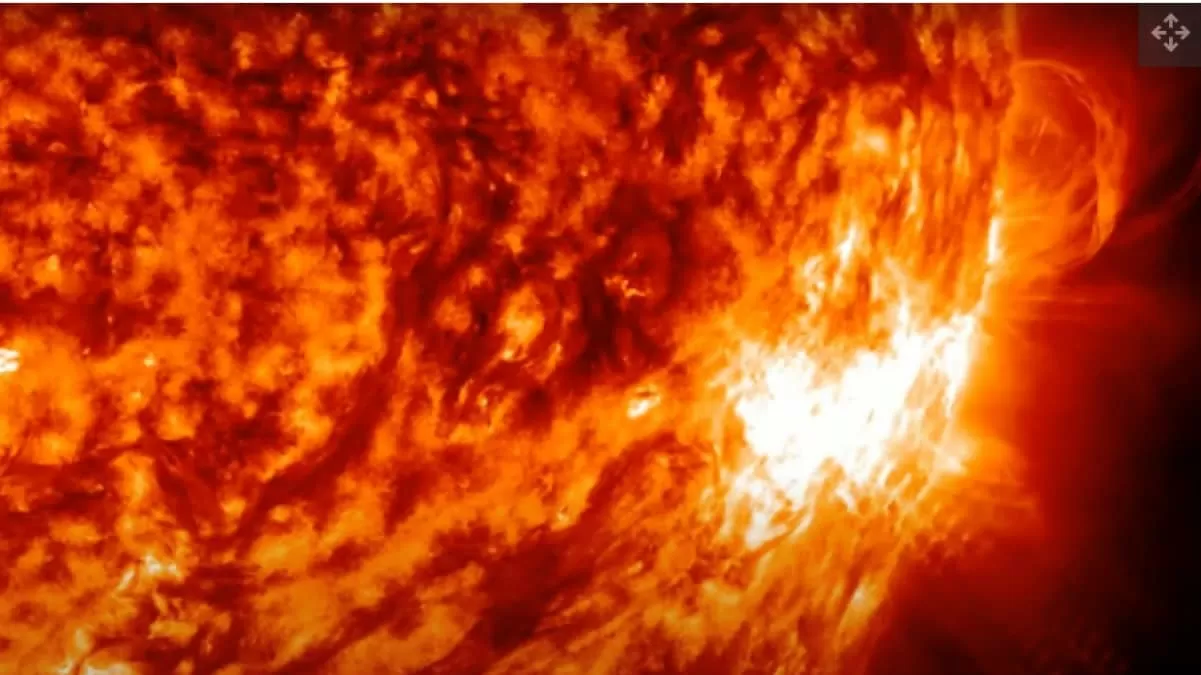On October 7, 2024, the sunspot AR 3842 made headlines once again as it released another powerful X2.1 solar flare. This event caused significant radio blackouts across North and South America, as well as over the Pacific Ocean. This is the second major flare from AR 3842, coming just weeks after it previously unleashed the most intense solar flare in seven years. While this may sound like a cause for concern, scientists from the National Oceanic and Atmospheric Administration (NOAA) are currently analyzing data to determine whether this flare will have any major impact on Earth.
The sunspot AR 3842 is a highly active region on the surface of the sun, known for producing intense solar flares. These flares are sudden and powerful bursts of energy that can release huge amounts of radiation into space. When directed towards Earth, they can cause disruptions in our communication systems and even pose a threat to astronauts and satellites in orbit. However, thanks to advanced technology and monitoring systems, we are able to predict and prepare for these events.
The recent flare from AR 3842 was classified as an X2.1, which is considered a significant event on the solar activity scale. This means that the flare was strong enough to cause radio blackouts in the affected regions. According to reports from NOAA, the radio blackouts were mainly experienced in the high-frequency range, which can affect communication systems used by airplanes and ships. However, these disruptions were short-lived and were resolved within a few hours.
This is not the first time that AR 3842 has made headlines. Just a few weeks ago, on September 20, it unleashed the most intense solar flare in seven years, with a classification of X9.3. This event caused widespread disruptions in radio communications and even triggered auroras in some parts of the world. The flare was also accompanied by a coronal mass ejection (CME), which is a massive cloud of charged particles that can travel towards Earth and cause geomagnetic storms.
After the September 20 flare, scientists were closely monitoring AR 3842 for any further activity. And sure enough, on October 7, it released another powerful flare. However, the good news is that the flare was not accompanied by a CME, which means that the impact on Earth will be minimal. Scientists from NOAA are currently analyzing data from the flare to determine its effects on our planet. They are also monitoring any potential CMEs that may have been generated by the event.
While solar flares can cause disruptions and pose a risk to our technology, they also play a crucial role in our understanding of the sun. By studying these events, scientists can gather valuable information about the sun’s magnetic fields and its behavior. This helps in predicting and preparing for future solar flares and their potential impacts on Earth.
Moreover, these events also showcase the incredible power and beauty of our sun. The X-class flares, like the ones released by AR 3842, are the strongest and most intense flares that can occur. They release massive amounts of energy that can be seen as bright flashes on the sun’s surface. These flares are a reminder of the immense power and complexity of our closest star.
In conclusion, the recent solar flare from AR 3842 may have caused some disruptions, but it also serves as a reminder of the incredible forces at play in our solar system. Thanks to advanced technology and monitoring systems, we are able to predict and prepare for these events. Scientists from NOAA are currently analyzing data to determine the impact of the flare on Earth. But one thing is for certain, the sunspot AR 3842 continues to captivate and fascinate us with its powerful displays of solar activity. Let us continue to marvel at the wonders of our sun while also staying prepared for any potential impacts on our planet.

